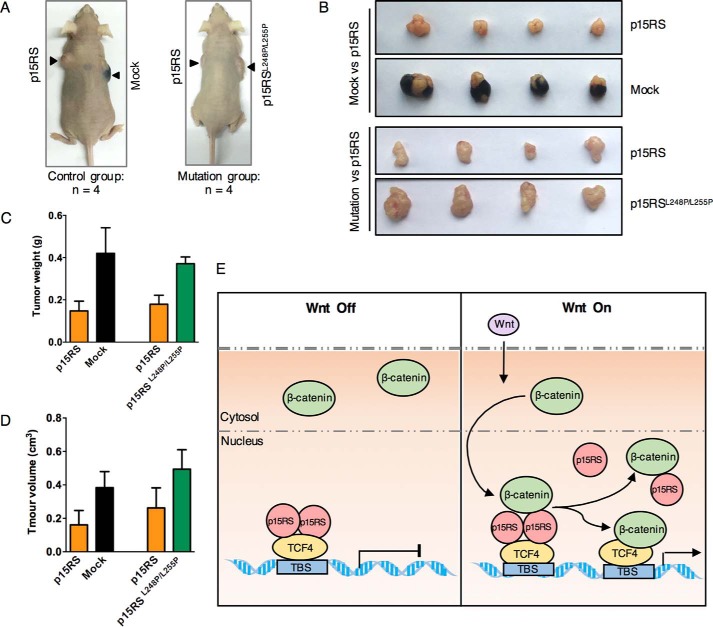Figure 5.
Dimerization of p15RS plays a critical role in tumor suppression. A–D, p15RSL248P/L255P exhibits little inhibitory effect on tumor formation. Tumorigenesis assay was performed by injecting 2 × 105 of the indicated A375 cells into BALB/c nude mice. Each mouse was injected with control cells and testing cells bilaterally into the armpit (A). Tumors were cultured to reach a diameter of about 1.5 cm (B). The weight (C) and size (D) of the tumors were collected and calculated. Data are presented as mean ± S.D. E, a proposed model of how dimerization of p15RS participates in Wnt signaling inhibition. Under Wnt quiescence conditions (Off), dimerized p15RS associates with TCF4 to suppress its transcription. When Wnt signaling is activated (On), β-catenin is accumulated and translocated into nucleus, where β-catenin disassociates the dimerized p15RS by preferably interacting with monomer p15RS. In such a way, β-catenin competes with dimerized p15RS and then forms a complex with TCF4 to activate transcription.

